
|   |

|   |
Contemporary Indian Dance - Ashish Mohan Khokar e-mail: khokar1960@gmail.com Photos courtesy: Ashish Mohan Khokar July 25, 2014 As the French would say, eet izz veery interasteeng! Yes, what is contemporary Indian dance and where is it headed? What is choreography? This search sets me thinking in light of Zohra Segal's passing away on 10th of July in her Mandakini Enclave Delhi home, care of daughter Kiran Segal, who lovingly looked after her for decades. Zohra Segal represents the starting point of contemporary dance styles as enunciated by Uday Shankar. She remained his only dancing partner who was NOT his student (but Mary Wigman's). Others were attracted to his persona and came under his influence but Zohra remained his dance partner, like Simkie, the French artiste. 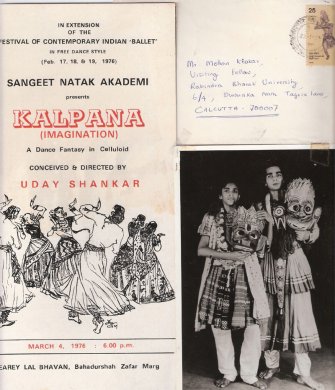 Kalpana 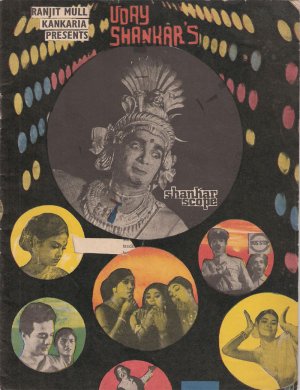 Shankarscope Uday Shankar's legacy was inherited by three, primarily: his cousin Sachin Shankar (Bombay based), his wife and daughter Amala-Mamata Shankar (Kolkata based) and Narendra Sharma (Delhi based). Although Uday Shankar continued to inspire many and mentored more (the Travancore sisters who danced in his film Kalpana; Yog Sunder, the prince of Gujarat; Anand Shivaram and assorted others), his signature work was born and died with him. Today, if anyone can dance like him and lay claim to his legacy, it is his daughter Mamata Shankar. After Shankar, many cloned his pan-Indian style of bit of Kathakali and bit of Kathak. Bharatanatyam merged with Mohiniattam. All through the 60s and 70s we saw this genre, palmed off as 'ballet' for want of a better word. So we had many such ballet productions. Others specialised in one form, say Kathak for the Malti Madhavs and the Shan-e-Mughals of Bharatiya Kala Kendra; the Puppet Ramayana by Little Ballet Troupe of Shanti and Gul Bardhan; Bharatanatyam for the Cholas and Thiruvalluvars of Nataraj-Shakuntala. All these productions had mostly mythology as theme; some were topical, social, even patriotic, owing to the times and climes. The SNA's Ballet Festival in 1976 was the first major attempt (under Mohan Khokar's term) to showcase all these choreographers and more. It was in mid 80s that a catalyst institution came about (Max Muller Bhavan, Mumbai) who forced languishing soloists in various classical forms, anew. Thus, Chandralekha in Bharatanatyam, Kumudini Lakhia in Kathak were reborn. This was a cut-off point and all their works and productions thenceforth were set in that language and grammar they had assiduously acquired under relevant masters. What they created had freshness of form and novelty. The beauty of solo format was replaced by group formations and multiplied energies. What two feet did, four or more did better! It also appealed visually, over and above ageing divas of classical forms who were past their prime. In the 90s the clones of the two above were hatched and they took to 'Contemporary' tag with alacrity and near vengeance. A niche had been discovered by pioneers - Chandralekha and Kumudini - and copying these was the best form of flattery. Thus, all through this decade we saw copycats who just used a classical form and created group works and named it after esoteric birds or bees or both. In 2000, environment and empowerment got added and the jargonisation of dance and jingoism was complete. 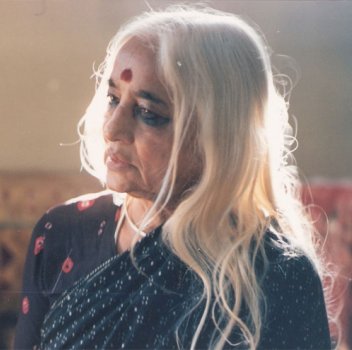 Chandralekha 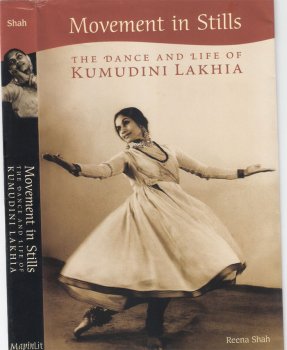 Kumudini Lakhia We were on the subject of choreography. How can we forget two Parsis who actually pioneered "modern dance" long ago in the 60s: Uttara Asha Coorlawala, who was a path breaker. Alas! She danced too few a years to establish herself in India and shifted to US of A and was lost to dance scene here. Astad Deboo, her follower, took to dance as duck would to water and has consistently maintained new direction and vision in Indian modern dance. What is 'modern' and what is 'contemporary'? Many dancers (and writers) themselves confuse the two. Any culture has a contemporary response, be it in films, fashion, even food (don't we hear food choreography today?). Every generation looks and adds anew. Modern is a complete new language, away from the classical and established. Only two or three dancers in India can be called truly modern: Uttara Coorlawala, Daksha Sheth and now in the last decade, a few younger seekers like Jayachandran Pallazhy, Madhu Nataraj and the Upadhya Sisters - Mayuri and Madhuri - who are all working meaningfully in search of a new Indian dance language. While Jayachandran is heavily dependent on technological inputs, Madhu is experimenting with various forms and Nritarutya has gone beyond the sameness of style and substance and created a new language and each work - yes, this is most important - each work is different and holds by itself. In Chandralekha's or Kumudini Lakhia's work, each work is an extension of same kind and type of dance because their language was set in one classical form; not in case of Uttara, Daksha or Mayuri-Madhuri of Nritarutya. We are not covering the diaspora scene here but mention can be made of two or three worthies: Shobana Jeyasingh and Akram Khan in UK; Annette Leday in France (only one working with Kathakali) and Ramli Ibrahim in Malaysia. Each has enhanced an extended Indian contemporary dance and two have succeeded in creating modern language though not necessarily Indian alone. This is a huge subject worthy of a book which I will be putting together someday, with DVDs (or an embedded chip, by the time the book will be out) but for now Ketu Katrak has come up with an overview of Contemporary Indian Dance (Palmgrove, Macmillan). This is a comprehensive and clever compilation of contemporary Indian dance practitioners and performance studies. Viewed from western prism and perspectives, it seems to have certain bias/agenda, which many west-based writers/universities delight in (including some of our own universities) and that agenda is primarily to decry Indian classical dance traditions (because west, especially USA has had none) and also use jargon and contexts to debunk things classical Indian (thus Bharatanatyam and Kathak are with small b and k, unlike Salsa and Tango, because western dictionaries don't treat Indian dance culture as a noun). Why we should foolishly copy that, beats me! Pulse is another UK based magazine on Indian diaspora or South Asian arts that does that and when I asked its current editor (long ago) why, she explained, "Because western dictionaries say so...." And because London does that, we, with our centuries of colonial hangups, copy that! In Ketu's book, the awe and admiration for big names like Kapila Vatsyayan and Chandralekha are too gushy for an academician she purports to be. She also has her pets - Chandra, Akram, Padmini, etc. all valid and worthy names. To add to this list non-dancers like Narendra Sharma and others shows her sketchy grasp and understanding of Indian dance scene. The book has good portions of some dancers in the diaspora, new names we have hardly heard of in India like Shyamala Moorty and Sheetal Gandhi. Ketu says she generally doesn't know what and where Indian Contemporary Dance is headed! Neither do we know. 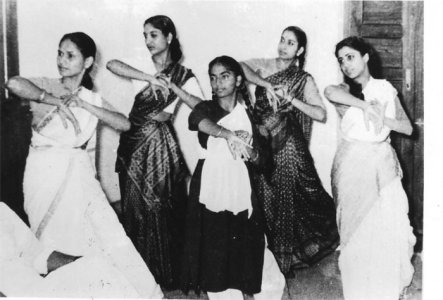 Kumudhini Lakhia, Maya Rao, Chitra Venugopal 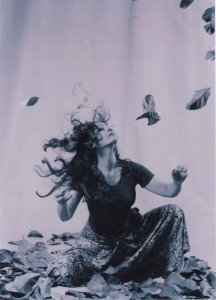 Daksha Sheth A good book on choreography by one master who knows her marbles has just been released - Maya Rao, A Lifetime in Choreography (published by Dept. of Kannada & Culture and Karnataka Sahitya Academy), setting the journey of a veteran, all of 86 years old Maya Rao, in perspective. Here is a gracious guru, mother figure of choreography, pioneering Kathak dancer who was also formally educated, both in academics, Kathak and Choreography (in a place no less than Moscow of the 60s) and someone who has trained thousands. Madhu, her dancer-daughter is a good all-rounder who mounted a warm, social function at and courtesy of ITC's Windsor Manor on July 18th, where all friends and family had a happy time, though more than the screen and stage stars (and recent arrivals on the dance scene), Maya Rao stole the thunder by her simplicity and style. Vimala Rangachar spoke from her heart, Girish Karnad from his head and Anant Nag from his soul. Ashish Vidyarthi, the actor's actor, happened to be in town for a shoot and being close to Maya Rao family chipped in with his voice that set the launch proceedings.Three local talents were roped in to read passages from the book in varying tones, of whom Kini had the best voice modulation and delivery for the occasion. The book reads well and is a good compilation of Maya Rao's choreographic works (her full story of her life in dance - a biography - was done 10 years ago by yours truly, so some commonalities of substance and structure can be discerned as source matter - Maya Rao - is same). For 400 rupees, it's a steal. Contemporary Indian dance has many sides to it. We have barely touched the surface in this column. Watch out for future columns, where I will highlight each milestone and benchmark; those who made a difference and those who will. Ashish Mohan Khokar is a reputed dance historian, biographer, critic and author of over 40 books on Indian arts and culture. He is the curator-inheritor of India's largest dance collection (dancearchivesofindia.com). He has mentored many youngsters and instituted awards and internships that help them. He has helped revive male solo dancing. His films on dance, discourses and critiques and editing of India's only yearbook on dance -attendance - have contributed significantly to appreciation of dance heritage and history. attendance-india.com Post your comments Pl provide your name and email id along with your comment. All appropriate comments posted with name and email id in the blog will also be featured in the site. |